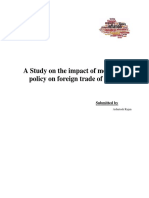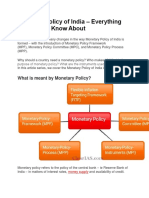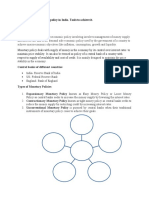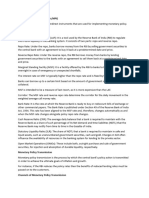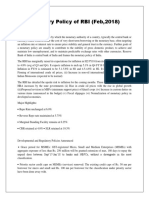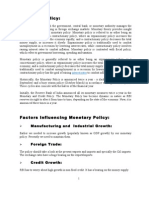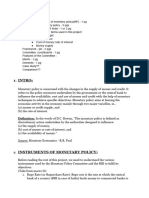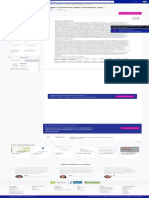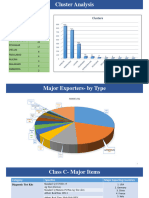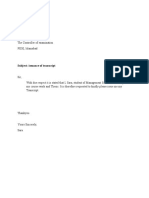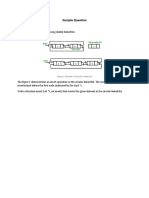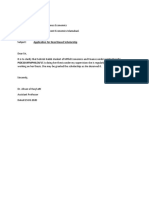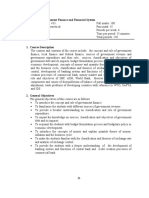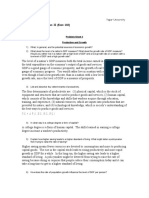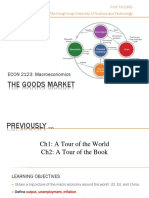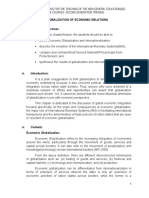0% found this document useful (0 votes)
104 views8 pagesRBI Monetary Policy Framework
The document discusses the goals and framework of monetary policy in India and the Maldives. It states that the primary goal of monetary policy in India is to maintain price stability while promoting growth, and this goal is implemented through a flexible inflation targeting framework. The Reserve Bank of India is responsible for formulating and implementing monetary policy using various instruments like repo rates, reverse repo rates, cash reserve ratios, and open market operations. Similarly, the main goal of monetary policy in the Maldives is to achieve price stability and maintain reserves while promoting growth. The Monetary Authority of Maldives uses instruments like minimum reserve requirements, open market operations, and foreign exchange swaps to implement its monetary policy framework of maintaining exchange rate pegging and
Uploaded by
Hafiz Saddique MalikCopyright
© © All Rights Reserved
We take content rights seriously. If you suspect this is your content, claim it here.
Available Formats
Download as DOCX, PDF, TXT or read online on Scribd
0% found this document useful (0 votes)
104 views8 pagesRBI Monetary Policy Framework
The document discusses the goals and framework of monetary policy in India and the Maldives. It states that the primary goal of monetary policy in India is to maintain price stability while promoting growth, and this goal is implemented through a flexible inflation targeting framework. The Reserve Bank of India is responsible for formulating and implementing monetary policy using various instruments like repo rates, reverse repo rates, cash reserve ratios, and open market operations. Similarly, the main goal of monetary policy in the Maldives is to achieve price stability and maintain reserves while promoting growth. The Monetary Authority of Maldives uses instruments like minimum reserve requirements, open market operations, and foreign exchange swaps to implement its monetary policy framework of maintaining exchange rate pegging and
Uploaded by
Hafiz Saddique MalikCopyright
© © All Rights Reserved
We take content rights seriously. If you suspect this is your content, claim it here.
Available Formats
Download as DOCX, PDF, TXT or read online on Scribd
/ 8



